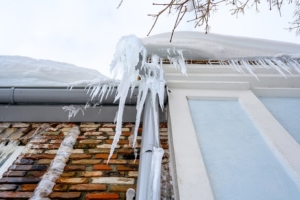Winter Weather Fluctuations Cause Damage to Homes and Buildings
Winter weather has significantly changed over the past few decades. Cold temperatures that would last for months now fluctuate daily between freezing and t-shirt weather. Piles of plowed snow that would take weeks to melt away are gone in days. Inconsistent has become the norm for winter present day.
The Northeast in particular has been experiencing warming temperatures and large increases in quantity during heavy precipitation events (especially winter and spring seasons). Between 1958 and 2012, the Northeast saw more than a 70% increase in the amount of rainfall measured during heavy precipitation events, more than in any other region in the United States.
Climate change not only affects our wardrobe selection, but it also affects our homes and other buildings (not to mention our health, sea levels, agriculture and ecosystems – but we’ll save that conversation for another day). Because buildings are made from different materials that expand at varying rates and temperatures, fluctuating temperatures outside can create a multitude of maintenance issues.
Water is the number one culprit for damage. Snow that falls during cold temperatures melts on a day with warmer weather, then it freezes when temperatures drop again. Water seeps into cracks and crevices and the damage occurs when the ice expands. Some examples of damage caused by freezing water include:
- Ice dams on roofs
- Drywall seams opening up
- Cracks in tile floors
- Trim separation around doors and windows
- Pipe bursts
Condensation buildup can also result from these frequent temperature changes, affecting glass windows and doors. Condensation forms, then freezes, which can affect caulk and damage or stain wood sills.
Preventing issues:
- Check for cracks in the fall that need to be filled
- Make sure building exterior and roof are properly flashed and sealed
- Replace old windows or add a storm window
- Ensure there is adequate ventilation and insulation in attics
- Remove icicles and snow buildup from roofs
- Make sure pipes are properly insulated
Understanding how winter weather, including extreme fluctuations, affects our homes and other buildings can help us better prepare and take preventative measures. Even taking small steps, like filling cracks and recaulking, can help avert larger maintenance issues.
It is not always apparent as to whether damage has occurred due to freezing and thawing over time or an individual occurrence. If you find yourself needing a consultants expert opinion, Forte can help! We can also provide heating temperature reviews for frozen pipes.
Source:
Globalchange.gov




